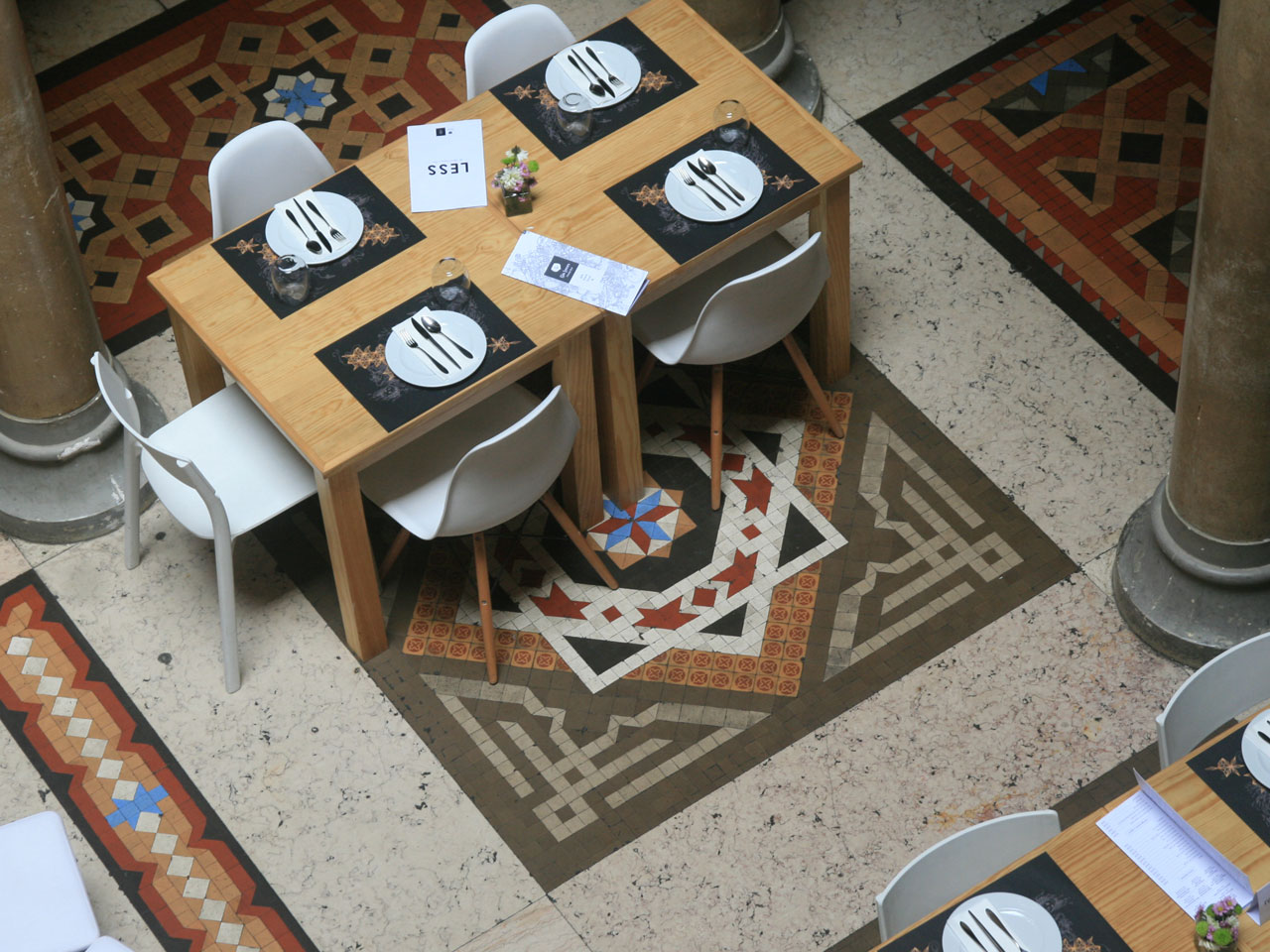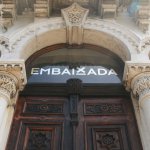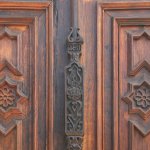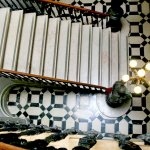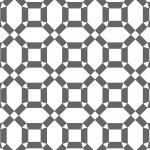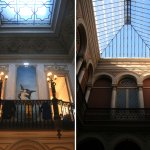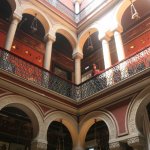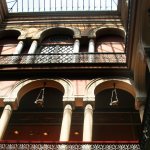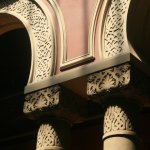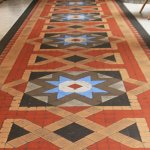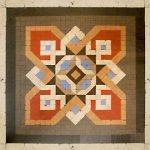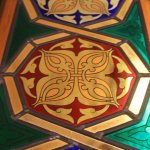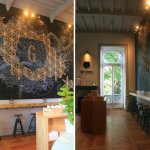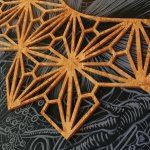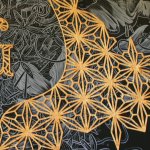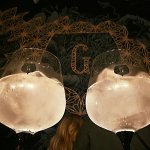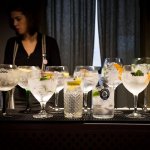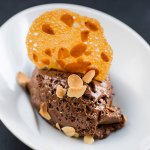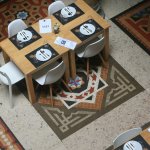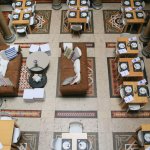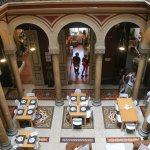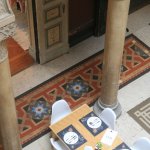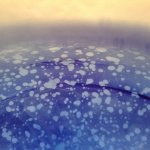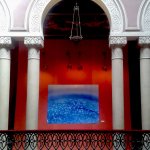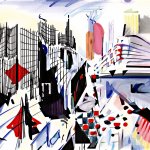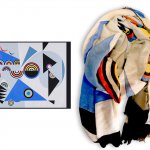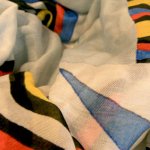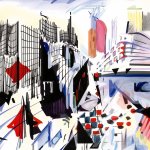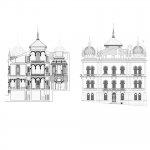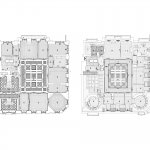Travel in Patterns | Embaixada
Neo-mudéjar architecture, Neoclassical interior layouts and Art Nouveau frescoes, plus many more contemporary art and design pieces, they all meet in a single place: Embaixada, or the embassy of Portuguese creativity in the very heart of Lisbon.
Finding, under the same roof, several distinct architectural style, along with contemporary art, interior and object design, fashion, food design and mixology, is quite special, and what is even more special is the fact that this cultural and social cocktail is not a museum but a particular retail concept.
The building itself was designed as the Palace of Ribeiro da Cunha. It was built in 1877 by the architect Henrique Carlos Affonso, restored in 2013, by the team of architecture bureau Falcão de Campos, when it was also turned into the innovative retail concept of Embaixada, winner of the TimeOut Idea of the Year Award.
We find here, above all, several exquisite, historical patterns: vibrant mosaics spreading on all floors, Arab style inspired stucco and wood decoration, geometrical frescoes and colored stained glass – all of them creating a unique interior atmosphere that, despite the quantity of detail, does not feel heavy.
Starting with 2013, the rooms of the former palace became commercial spaces of Embaixada, hosting a diverse range of shops focused mainly on Portuguese design, fashion, gastronomy and culture. The result of this adaptive reuse project is a fusion tradition and contemporaneity, blending preservation of the architectural heritage with the newest ideas that Portugal has to offer in matters of design.
Mixes & Tastes
In the very center of the space, in the central, triple height and glass covered patio, there is a place to dine Less and enjoy the mixology created by the Gin Lovers.
The visual identity of the Gin Lovers is built around the shape of a cocktail glass and a 3d star anise pattern, the work of Portuguese artist Mário Belém, generously spreading on an entire wall and counterpointing the historical atmosphere with a contemporary touch.
The Less menu is the creation of Portuguese Chef Miguel Castro e Silva and, among the highlights of the dishes, one can enjoy various fish tartars, like the white fish with avocado and saffron milk one, or exquisite desserts, like the chocolate mousse with almond tuile.
The Gin Lovers bar selected several special wines to pair the dishes but its main focus is on gin, to be more exact: on 60 brands of gin and also a generous gin cocktail list. The brand is actually a generous gin portal, also including a store for beverage, botanicals (aromatic herbs and flowers to go with various recipes) and ustensils, as well as a magazine (‘the only gin magazine in the world’ as they say it on the very cover), along with two gin bars in Lisbon.
Details & Zoom Ins
There are several more special geometries to be found at Embaixada but, for this time, we select only two more. This first one is the photography exhibition of Gervásio Lopes, brought here by the Art Embassy, the contemporary art gallery of the space.
The exhibition is entitled A Divergent Look and focused upon ‘homemade landscapes and hidden corners of daily routines’ translated into color, shape, texture and feeling: ‘photographing something simple and exposing it extraordinarily different, this is my technique’ says the author of these amazing captures of in-detail patterns of mundane objects.
https://www.facebook.com/gervasiolopesfotografia/
Geometries & Fractals
Another very special geometrical design is to be found inside the shop of It’s About Passion – the scarves of Antiflop, a special Portuguese brand that focuses upon ‘artwork that can be worn’ thus reproducing it, in limited series, on scarfs, tunics or t-shirts. These below are some of the artworks of Nadir Afonso, translated into print on scarves. Nadir Afonso was a Portuguese architect who practiced Le Corbusier and Oscar Niemeyer and also a notable abstract artist, whose work has always been deeply linked to his interest for geometry. He developed the so-called objective approach to geometric art and a personal aesthetic theory based on the idea that ‘art is a show of exactitude’.
And a Few Words on Style
Before we leave Embaixada, we take a final look at architecture, trying to capture as much as we can from this elegant, balanced and very geometrical style that is called the Neo-mudéjar. It belongs mostly to the Iberian Peninsula and to the period between 1860 and 1920. It is part of the historicist and orientalist fashion that widely dominated, with different local versions, all the European countries, in those times. Most of the buildings designed with this particular oriental approach to silhouette and decoration were mostly of public and entertainment function – train stations, arenas, saunas, casinos or private palaces, as the case above.
Architectural Project of Rehabilitation: J. P. Falcão de Campos e Appleton & Domingos Arquitectos, Lda.
Collaborators: Francisco Vilaça, Carmo Carvalho, Cátia Venda, Marta Bandeira, Vanessa Santos Silva



